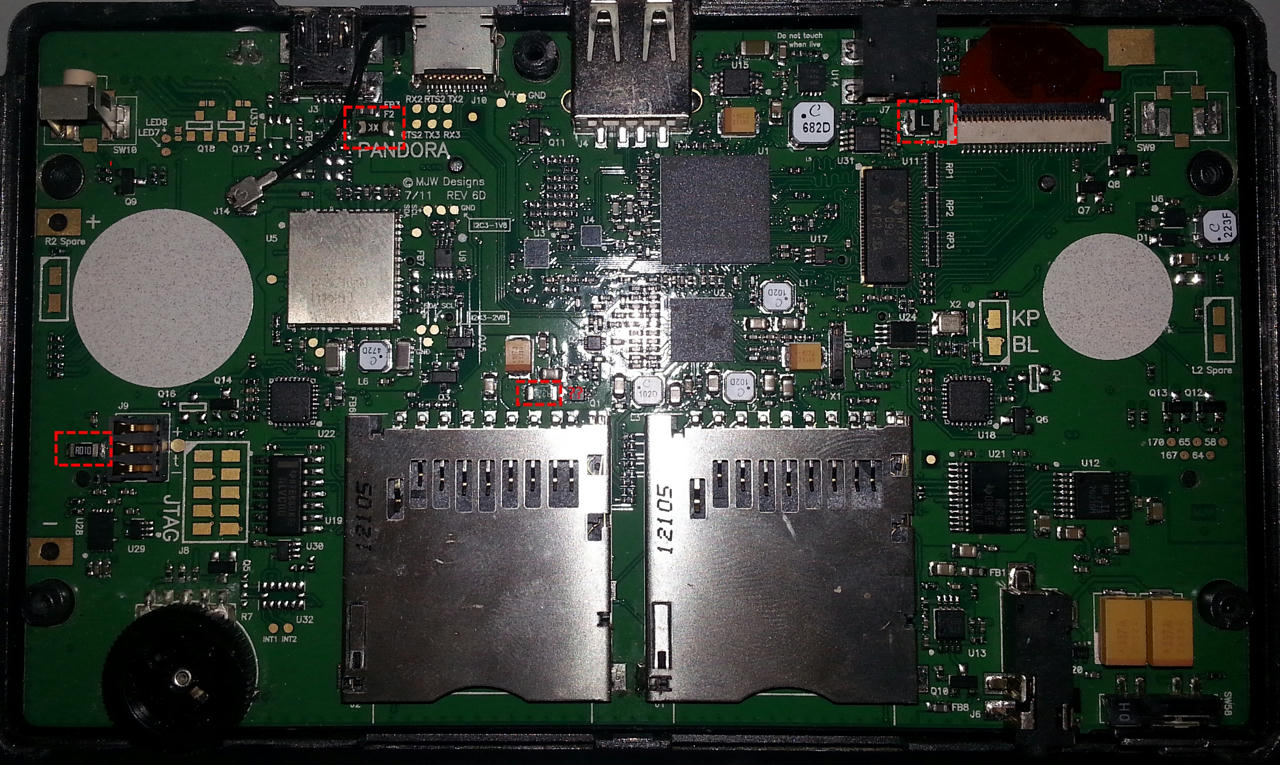KillRoXx
Member
What i discovered was an atrocity, When my Pandora fell 6 months ago, the button inside (underneath the L trigger) snapped off completely (could not find the white thing -don't know what its called-) aswell as the solder holding the rest of that button in place
However i also found a gold disc like thing just hanging out in there. (no idea what it is)
I also know that the unit won't charge so i went looking for a blown fuse (unfortunately i have no volt checker :< )
No visible damage at all to the PCB (except for the l trigger being completely shredded off when i dropped it)
i also know there is no water damage. (you guys forgot the indicator! or maybe theres two. have no idea what those things are. look like black rubbery things next to the battery port. maybe those are the indicators. in anyways. they aren't pink)
how would i fix the unit so i can charge it again?
EDIT: I know my post is kind of everywhere. but i really just want to play with my open pandora again
However i also found a gold disc like thing just hanging out in there. (no idea what it is)
I also know that the unit won't charge so i went looking for a blown fuse (unfortunately i have no volt checker :< )
No visible damage at all to the PCB (except for the l trigger being completely shredded off when i dropped it)
i also know there is no water damage. (you guys forgot the indicator! or maybe theres two. have no idea what those things are. look like black rubbery things next to the battery port. maybe those are the indicators. in anyways. they aren't pink)
how would i fix the unit so i can charge it again?
EDIT: I know my post is kind of everywhere. but i really just want to play with my open pandora again
Last edited by a moderator:


